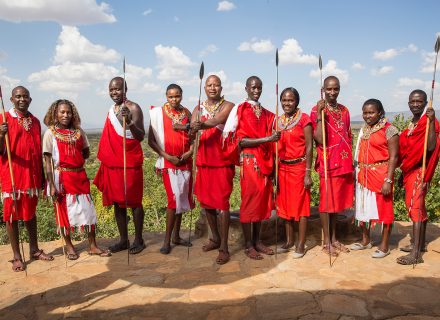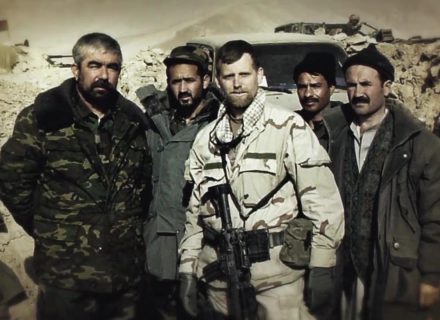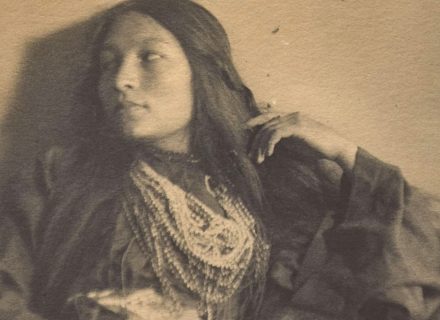For self-taught watercolorist Norma Howard, it is the story behind the serenity. Through vibrant colors and beautiful scenes, Howard tells the stories of her Choctaw and Chickasaw ancestors.
The scene is bucolic and soothing. A Native American woman sits on the grass, a basket full of wild onions in her lap as two children sit with her, their faces intent on what she is doing. The colors are rich and warm, and the faces in the painting are full of expression. In another scene, two wolves ramble side by side under a canopy of trees, the colors layered to create a seamless scene of nature. In yet another painting, a Native American family harvests corn with woven baskets on their backs as a young child in overalls watches, his thumb stuck in his mouth.
Self-taught watercolorist Norma Howard of Stigler, Oklahoma, is known for her poignant scenes that tell the stories of her Choctaw and Chickasaw ancestors in Oklahoma. Her paintings transport the viewer to the past, to quiet moments of the everyday lives of her ancestors. From scenes of annual harvests to a simple story of a boy fishing with a cane pole in a cypress-filled lake, Howard’s style brings the life of Native Americans alive in a style reminiscent of pointillism. Instead of using thousands of dots like the impressionists did, she instead uses tiny basket-weave brush strokes to bring a vibrant depth to her watercolors.
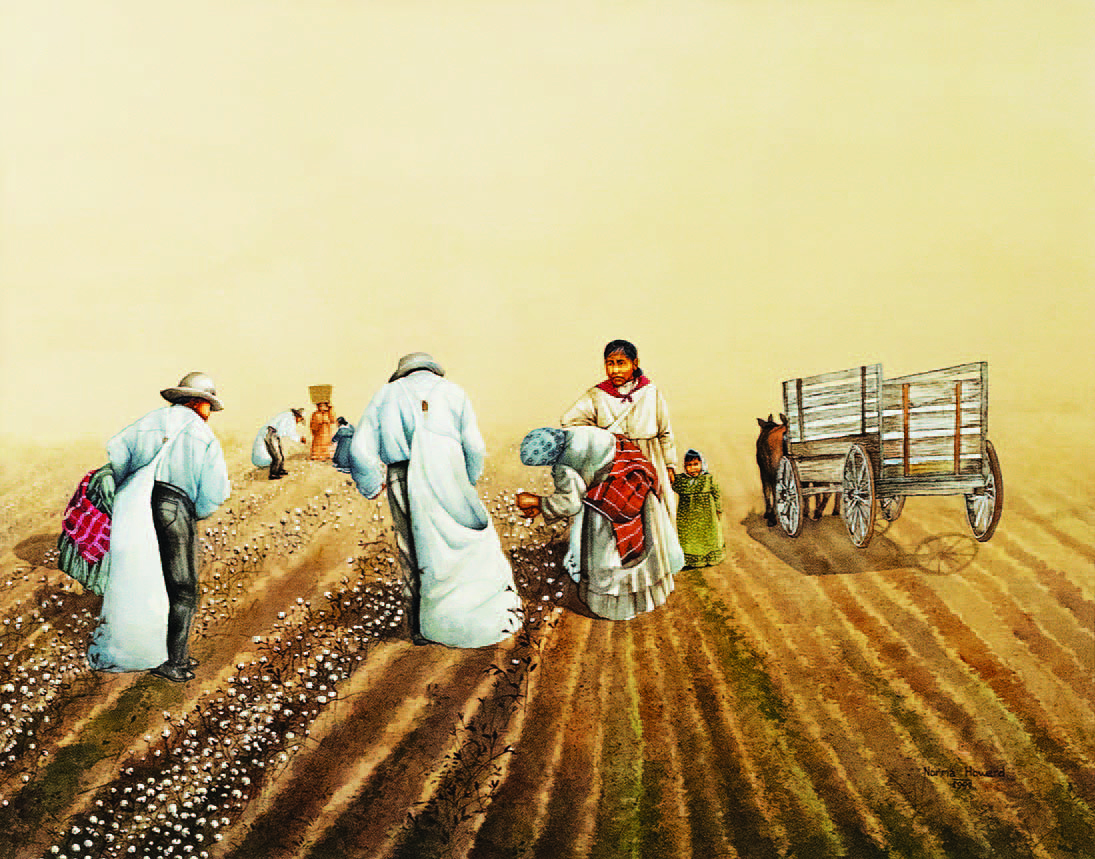 Early Morning Pickins, 1999, watercolor on paper, 19" x 23.75"
Early Morning Pickins, 1999, watercolor on paper, 19" x 23.75"
She taught herself, first by drawing with crayons given to her by her father, and then by painting with watercolors. “I developed a style and technique of my own in watercolor called ‘basket weave’ strokes. Painting layer upon layer of small cross-hatched strokes creates a unique three-dimensional effect in my artwork. As a self-taught artist, I find inspiration to paint from family stories, traditional dances, and our Native lifestyle.”
Howard has been drawing for as long as she can remember, going back to growing up in eastern Oklahoma with eight siblings. “My dad was a house painter and contractor. My mother was a homemaker. My brothers and I would always play in the woods. There, we could see the Southeastern landscape, the hills, river, and creeks. That’s where my inspiration comes from.”
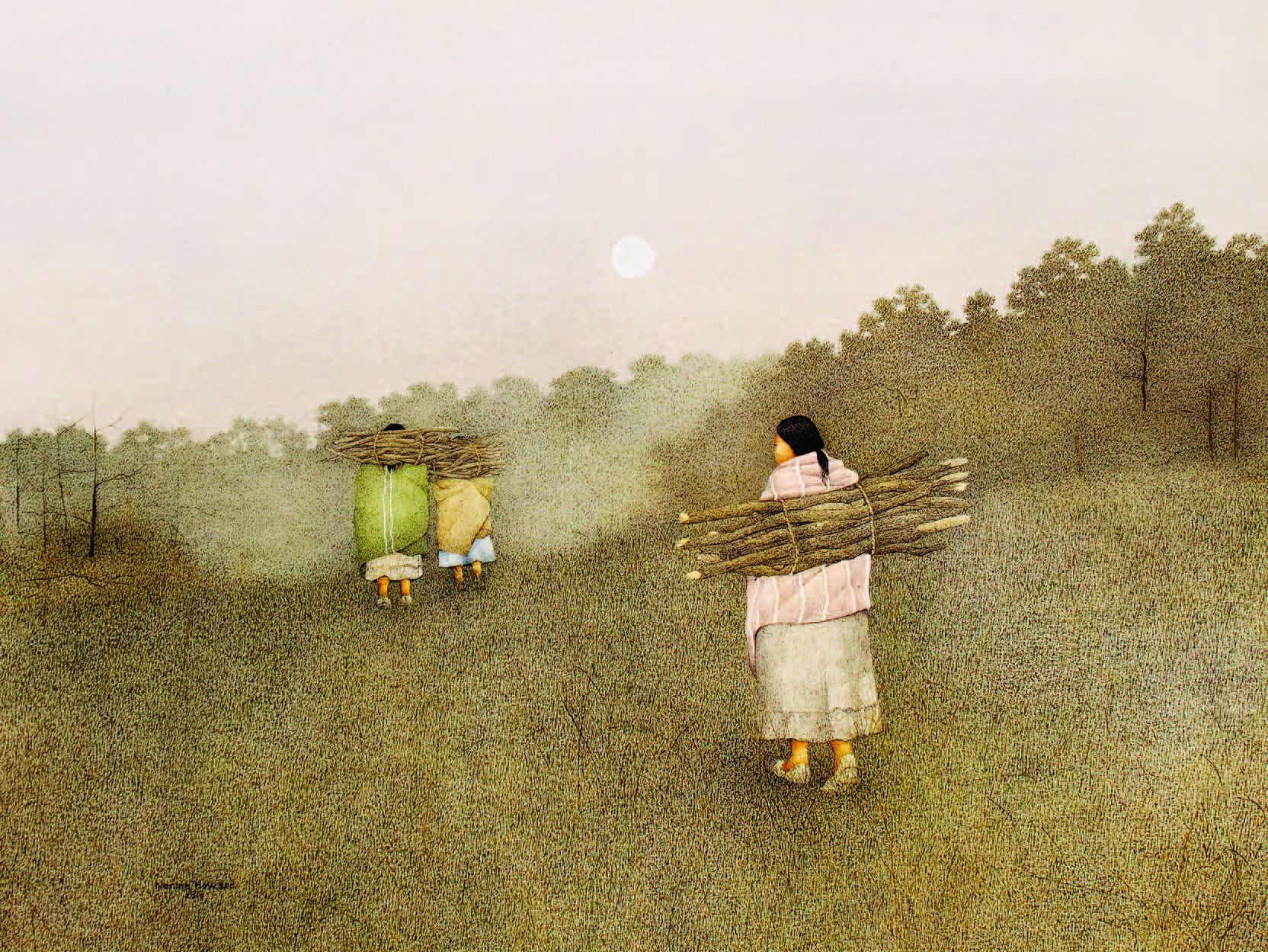 Untitled (Carry Wood), watercolor on paper, 16" x 21"
Untitled (Carry Wood), watercolor on paper, 16" x 21"
As a child, Howard picked blackberries with her mother and sold the bounty door-to-door. She saved up her money to buy her first set of watercolors at the Ben Franklin store, and at 11 or 12, Howard started painting. She painted for the love of it, because she “had to,” and although she loved the expression, she never imagined she could become a professional painter.
In rural Oklahoma, Howard’s family didn’t have electricity, so instead of watching television or listening to the radio, the children listened to stories their mom told. Many of those stories brought the legends and the history of the Choctaw and Chickasaw people to life, focusing on how the tribes survived.
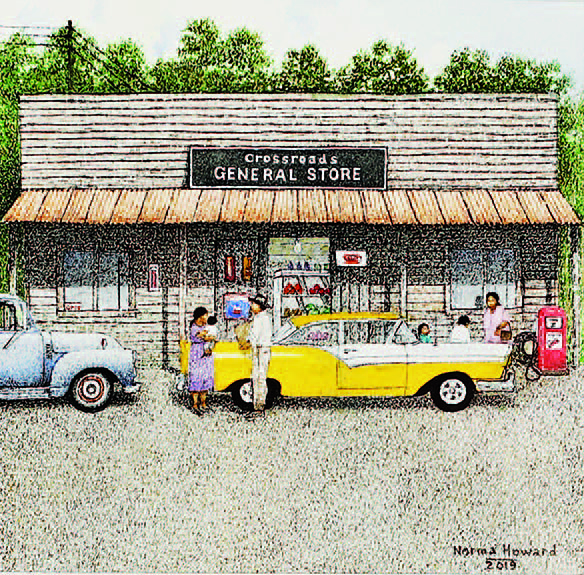 Miniature Storefront, 2019, watercolor on paper, 4.25" x 4.25"
Miniature Storefront, 2019, watercolor on paper, 4.25" x 4.25"
“I had a good imagination, so listening to her stories made me feel like we had a connection with the people, land, and animals and it helped me become the artist I am today,” Howard says. Her mother, though well-meaning, convinced her that people wouldn’t buy Indian art, a belief that was hard for Howard to overcome. She didn’t show her work in public until she was 36.
In 1995, she took a chance and entered her work at the Red Earth Native American Cultural Festival in Oklahoma. When the third-prize winner at the show was announced, she figured she would not win at all. She didn’t place second either. No one was more shocked than she was when she was declared the first-place winner.
“At that time, I had never been to an art show at that level before,” Howard says. “I didn’t know how my work was going to be received. Much to my surprise, I sold all 32 of my paintings before lunch the first day and received first place in the watercolor division. That changed everything for me.”
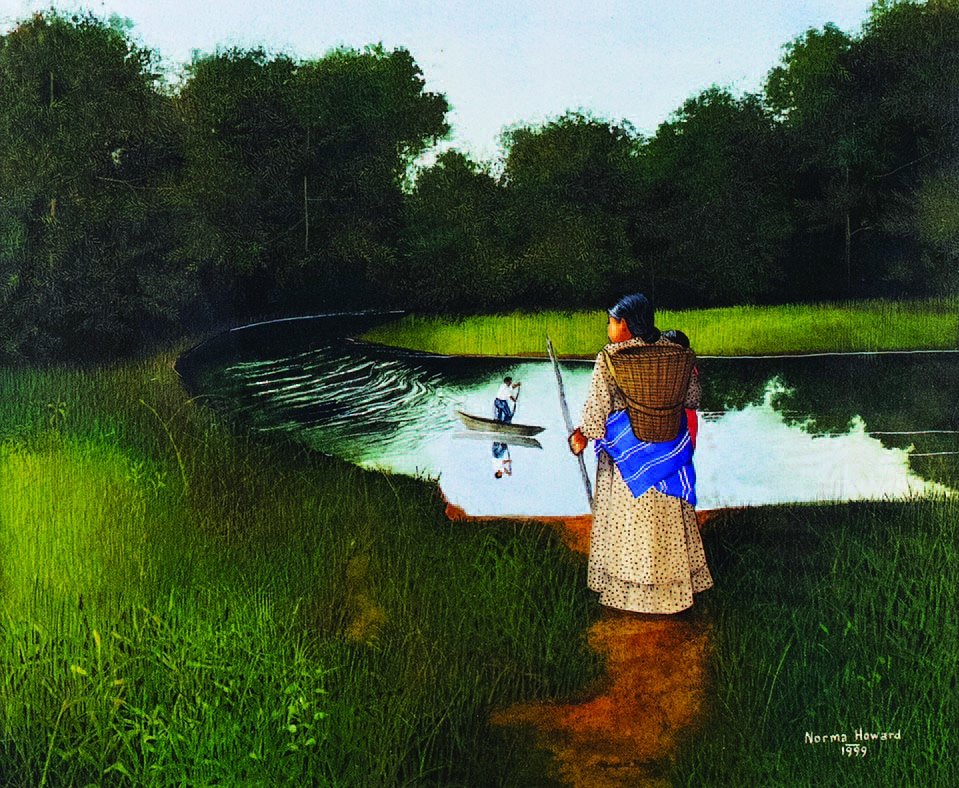 Untitled (Woman in River), 1999, watercolor on paper, 10" x 12.25"
Untitled (Woman in River), 1999, watercolor on paper, 10" x 12.25"
After her stunning debut, Paul Rainbird, president of the Southwestern Association for Indian Arts at the time, told Howard she should enter the Indian Market and apply for a fellowship. Howard’s work skyrocketed after being awarded the fellowship and earning the attention of art lovers and critics. She garnered several awards, including first place, Best of Division, and Best of Classification at the Santa Fe Indian Market in 2001, 2013, and 2014. She earned six Best of Show honors at the Five Tribes Museum Masters Art Show; two Best of Show honors at the Trail of Tears art show in Tahlequah, Oklahoma; and hosted a one woman show at Blue Rain Gallery in Santa Fe.
Last spring, Howard was one of five featured Native American artists showcased in the exhibit As We Gather: Plants and Foods of our Land at Oklahoma City’s Exhibit C Gallery. For Howard, the subject matter expounded on what she naturally paints. “The theme is about Native people surviving off the land, living off of what Mother Nature provides,” Howard says. “Many of my paintings depict people picking berries, gathering wood, or fishing.”
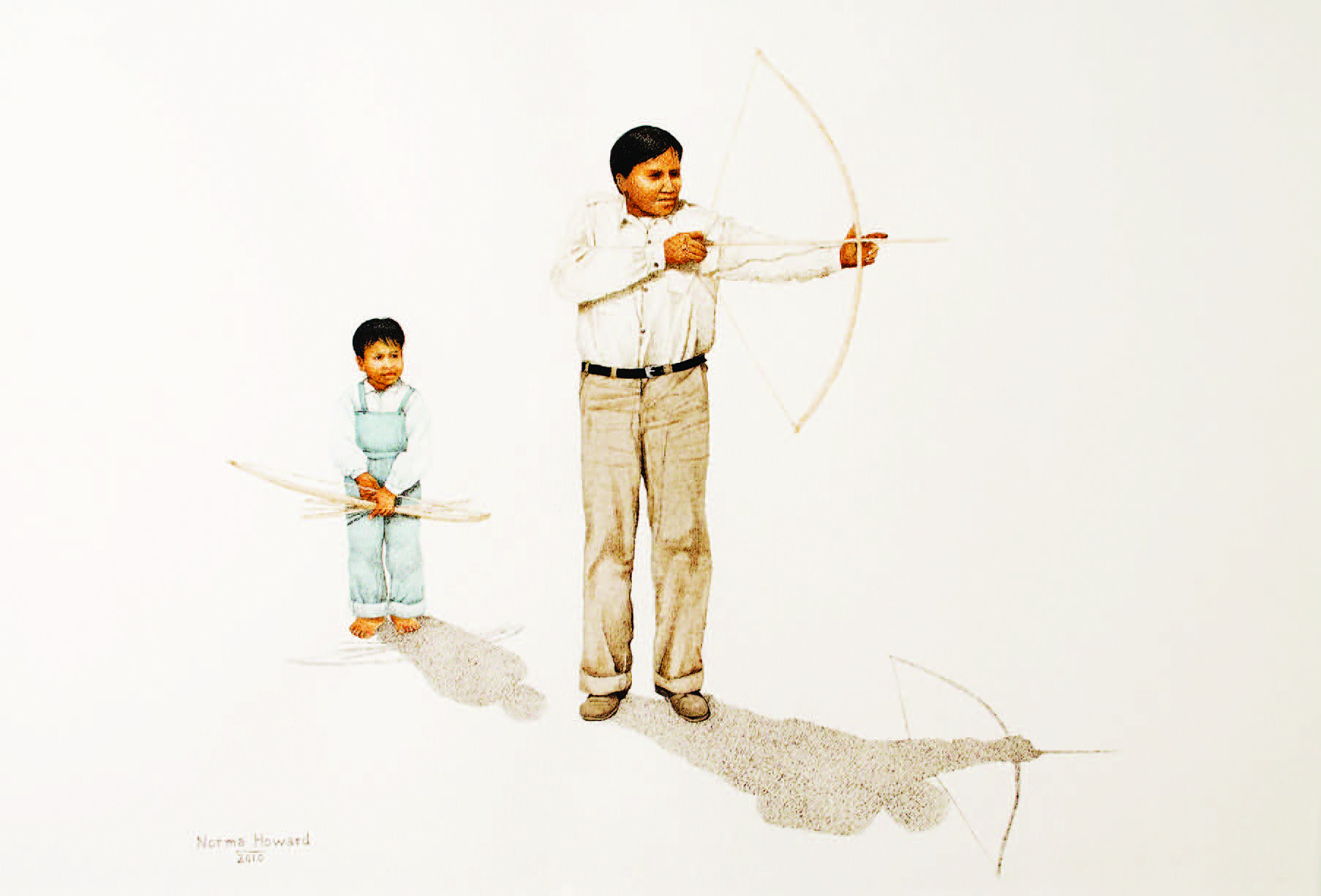 Untitled, 2010, watercolor on paper, 8" x 12"
Untitled, 2010, watercolor on paper, 8" x 12"
But it’s not all bucolic. Howard’s father’s family were among those forced from ancestral homelands in the Southeast along the infamous Trail of Tears. Her mother’s people were forced to move to Oklahoma in 1903, during the “second removal” of the Mississippi Choctaws. That dark history and the attempts to erase Native culture throughout history remain a major inspiration for Howard’s paintings.
“I hope my art brings understanding and appreciation of our culture, history, and lifestyle for our tribe,” she says. “I would like for people to understand that our tribe has a rich culture and traditions that are still practiced to this day.”
Norma Howard is represented by Blue Rain Gallery in Santa Fe.
Header Image: Untitled, 2010, watercolor on paper, 7" x 10"














